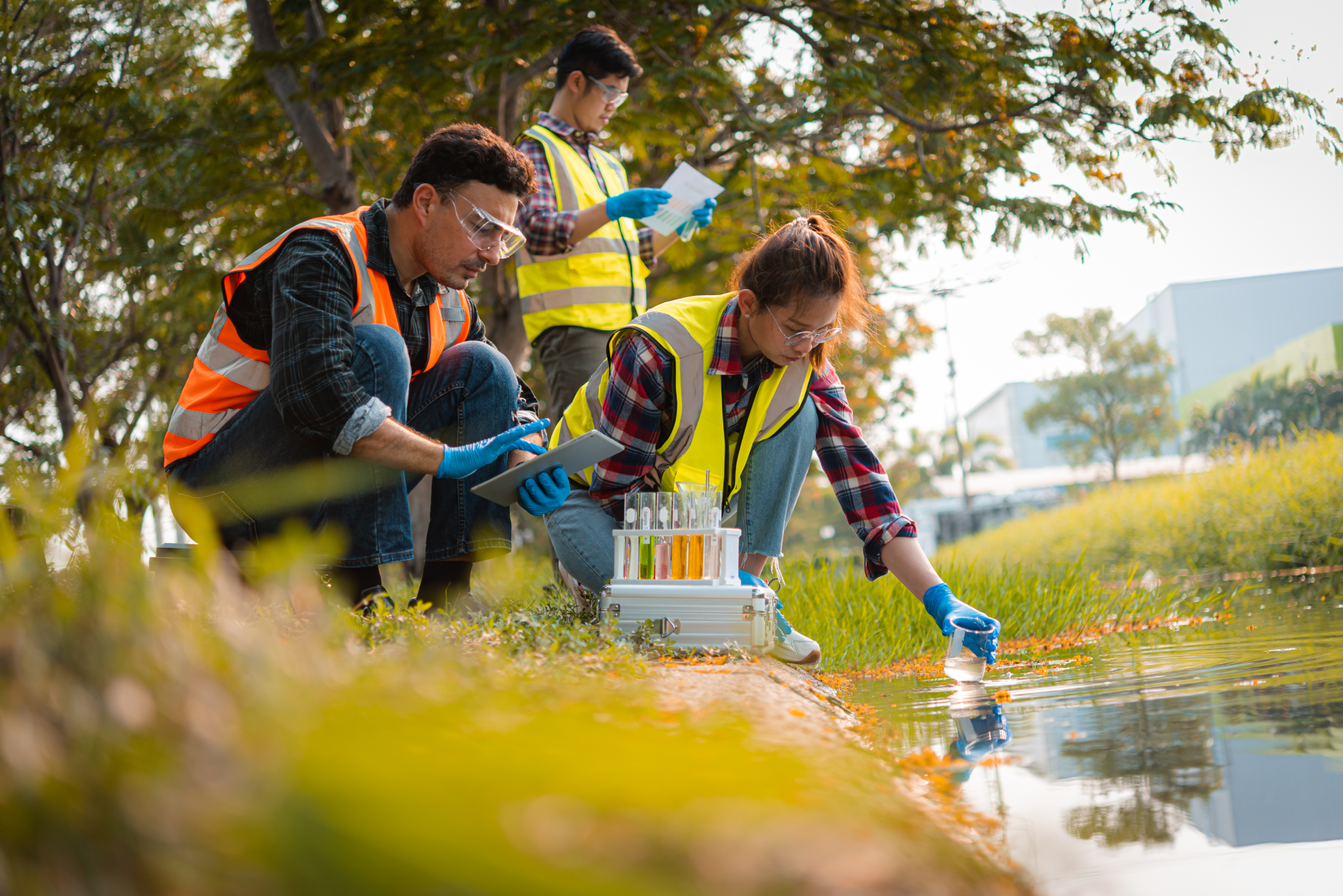50 ideas for using open innovation to address one of the world’s greatest challenges.
A changing climate impacts every aspect of life on Earth, and all environmental problems are human problems. Among the past month’s headlines: Rising ocean temperatures are bleaching coral reefs and threatening marine ecosystems, PFAS (harmful man-made chemicals) are contaminating the soil and causing diseases, longer spring pollen seasons are making allergies worse, and climate migration is already shaping urban planning and economic development.
Addressing climate change will require systemic change and investment in groundbreaking solutions across sectors, industries, and problem areas — and government, philanthropy, and private-sector funders are all sponsoring initiatives to solve important problems in health, science, education, defense, and other areas. At the federal level, opportunities for action are plentiful: The Inflation Reduction Act is funding “clean energy, climate mitigation and resilience, agriculture, and conservation-related investment programs,” and the President’s 2025 budget proposal calls for investments that confront the climate crisis “while spurring clean energy innovation, increasing resilience, and protecting natural resources.”
Many federal agencies will use “push mechanisms” like grantmaking and policy to advance the administration’s climate goals. But sometimes grants and policies alone aren’t enough to solve complex problems. When it’s too early, too risky, or too hard — or when push mechanisms won’t deliver an innovation fast enough — “pull mechanisms” and market-shaping tools like incentive prizes can accelerate innovation by delivering the right incentives at the right time to generate and develop the best ideas and solutions.
Coming soon: AI for Climate and Nature Grand Challenge
Luminary Labs is designing and producing a new $100 million Grand Challenge on behalf of Bezos Earth Fund.
Incentive prizes and other open innovation programs could help surface and accelerate solutions to many climate and environmental problems. Just as climate change impacts every aspect of life, every federal agency can support climate solutions. But a recent analysis published by the Environmental Policy Innovation Center found that the U.S. government’s environmental and natural resources agencies — Department of Interior, Environmental Protection Agency, National Oceanic and Atmospheric Association (within the Department of Commerce), and Department of Agriculture — have an opportunity to advance climate solutions through open innovation.
To be sure, not all problems are “prizable.” Traditional procurement is often better when the ideal solution is known and already exists. Sometimes the market solves a problem on its own, or policies are enough to create the desired change. But when a problem is well-defined, a group of innovators is engaged, the foundational science and technology exist, and sufficient incentives are available, an incentive prize can yield breakthrough solutions.
Inspired by the once-in-a-generation opportunity to advance rapid and transformative solutions and make a real impact on the future, we’ve curated a list of 50 climate prize ideas. These microproposals are only scratching the surface; they’re intended to inspire fresh thinking about how open innovation could be used to invite a wide range of people and ideas to climate and environmental problem-solving. These ideas could be championed or sponsored by federal agencies, grantmaking institutions, and other types of funders.
Clean energy, energy efficiency, and electrification
Improving clean energy production and access — while also increasing energy efficiency — can help people reduce emissions and save money.
- Use agricultural waste to power off-grid systems or sustainable generators.
- Improve “last mile” grid hookups to help rural businesses connect with reliable clean energy supplies.
- Use satellite imaging to help utility providers and regional governments identify opportunities for improving electric grid resilience.
- Use synthetic biology to help American manufacturers reduce dependency on mining and enable sustainable production of next-generation batteries.
- Improve access to electric vehicles for commuters’ daily transportation needs.
- Create resilient, community-owned microgrids.
- Build electric vehicle infrastructure in rural communities.
- Develop vehicle-to-grid solutions that store excess energy from renewables during high production and return energy to the grid during low production.
Green workforce and education
The clean energy sector is huge and growing — and investments in production, infrastructure, and manufacturing can create fulfilling jobs and economic prosperity.
- Train people in new and emerging green jobs so they can access new roles such as wind turbine technicians, electric vehicle manufacturers, and solar panel installers.
- Train electricians, HVAC installers, and other workers so they can conduct energy-efficient retrofitting.
- Help workers find, understand, and succeed in green jobs.
- Create opportunities for middle grades and high school CTE students to explore emerging climate-oriented careers.
- Help middle grades and high school teachers better prepare students for new green jobs.
- Teach students construction skills while they weatherize and retrofit homes of low-income Americans.
Air and water quality
Air and water pollution disproportionately impacts historically marginalized communities; investments in clean air and water are also investments in equity and justice.
- Detect and monitor air and water pollutants in communities near emitters.
- Clean up legacy pollution and develop equitable plans for long-term stewardship.
- Identify safe ways to manage and dispose of toxic chemicals.
- Develop accessible PFAS detection and treatment systems to remove “forever chemicals” from drinking water.
- Advance research to develop safe PFAS removal and destruction methods.
- Create cleaner air in schools by removing both pollutants and pathogens.
Biodiversity and restoration
Efforts to conserve, maintain, and restore natural spaces can help the planet absorb emissions and mitigate a changing climate’s impact on ecosystems.
- Map and identify changes to wetlands at a national scale.
- Better understand the ability of plants and fungi to absorb toxic waste and clean up polluted sites.
- Bring resilient, biodiverse plantings to polluted industrial sites.
- Use environmental DNA and RNA to measure biodiversity, track invasive or endangered species, and manage habitats.
- Increase roadside beauty and biodiversity while protecting wildlife and motorists from accidents.
- Develop low-cost tools to help citizen scientists measure biodiversity in their own communities.
- Identify riparian habitat restoration strategies that will protect freshwater resources and prevent disastrous flooding during heavy rainfall.
Agriculture
Innovative approaches to farming and agricultural land management can help secure our food supply in a changing climate.
- Create resilient local food systems by advancing vertical farming and other urban farming techniques.
- Find the best ways to use solar farms as agricultural fields for grazing or crop production.
- Target specific pests and reduce food loss with new RNA interference (RNAi) pesticides.
- Achieve greater nitrogen runoff removal efficiency with genetically engineered buffer or wetland plants.
- Remove PFAS (harmful man-made chemicals) from soil and recover contaminated land.
- Monitor and manage agricultural irrigation water use.
- Advance plant breeding research to select heat-resistant and drought-resistant fruits and vegetables.
Resilient infrastructure and responsible land use
Climate adaptation and resilience initiatives can help communities and ecosystems weather increasingly severe floods, wildfires, droughts, and extreme temperatures.
- Develop public infrastructure to better manage excessive rainfall.
- Enhance AI-powered forecasting capabilities to help communities prepare for more frequent severe weather.
- Develop and deploy wildfire prevention tactics such as early detection, controlled burns, and strategic wildlife management.
- Advance technologies for emergency power and water purification in areas impacted by disasters.
- Help municipalities forecast public water shortages.
- Keep cities cooler as global temperatures rise and heat waves become more intense.
- Help cities incentivize building and planting of green roofing to address urban heat islands.
- Track land use in communities by helping residents find and view permitting applications for local projects.
- Identify low-carbon or no-carbon construction materials and techniques for affordable housing and other building projects.
Carbon capture and removal
Ideally, strategic investments and actions in clean energy, energy efficiency, and electrification will help the world meet its emissions reduction goals; realistically, some types of carbon removal may be necessary to offset continued use of fossil fuels.
- Explore and evaluate air-based, land-based, ocean-based, and rock-based carbon capture methods.
- Help farmers sequester more carbon in every acre of soil.
- Develop permanent carbon storage technologies.
- Help industry improve the efficiency of direct air capture technologies.
- Create robust monitoring, reporting, and verification systems for geological storage, carbon sequestration, and other natural and engineered carbon removal solutions.
- Help scientists safely assess the risks and benefits of geoengineering.
- Develop new uses and markets for captured and stored carbon.
If you’re considering an open innovation initiative to address a climate problem or build a more resilient future, we’d love to support your organization’s early problem framing. Request a 30-minute consultation with Luminary Labs experts: Email hello@luminary-labs.com.




